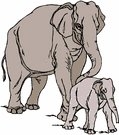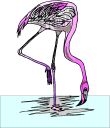
Worksheets and No Prep Teaching Resources
Reading Comprehension Worksheets
Animal Themes
Birds
Farm

Animal Themes
 Worksheets and No Prep Teaching Resources Reading Comprehension Worksheets Animal Themes Birds Farm |
 Animal Themes |
| edHelper's suggested reading level: | grades 6 to 8 | |
| Flesch-Kincaid grade level: | 7.4 |
| Emus & Cassowaries |

|
 1 In Australia, there are two birds that could compete for the title of the world's second-largest bird. Both birds stand around 6 feet tall. Both weigh about 130 pounds. Both birds - emus and cassowaries - are strong contenders to stand behind ostriches and be named the second largest bird on Earth. Just like ostriches, emus and cassowaries are also flightless. Their wings are too small to carry their heavy weights into the sky. But emus and cassowaries swim well, run fast (more than 30 miles per hour), and jump high (5 feet)!
1 In Australia, there are two birds that could compete for the title of the world's second-largest bird. Both birds stand around 6 feet tall. Both weigh about 130 pounds. Both birds - emus and cassowaries - are strong contenders to stand behind ostriches and be named the second largest bird on Earth. Just like ostriches, emus and cassowaries are also flightless. Their wings are too small to carry their heavy weights into the sky. But emus and cassowaries swim well, run fast (more than 30 miles per hour), and jump high (5 feet)! |
Create Weekly Reading Books
Prepare for an entire week at once! |
| Leave your feedback on Emus & Cassowaries (use this link if you found an error in the story) |
 |
Animal Themes
|
 |
Birds
|
 |
Farm
|
 |
High School Reading Comprehensions and High School Reading Lessons
|
|
|